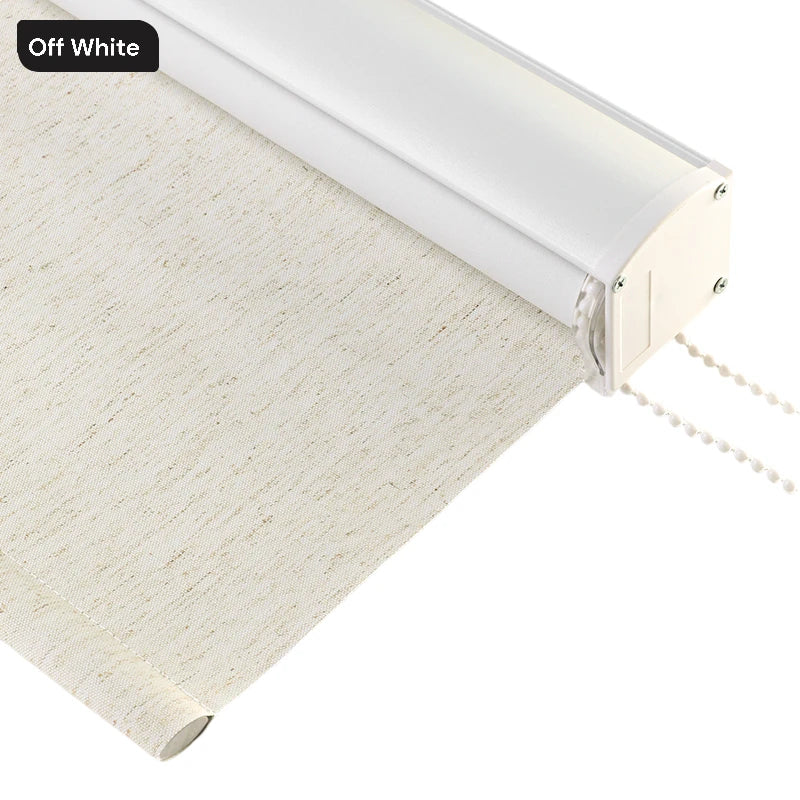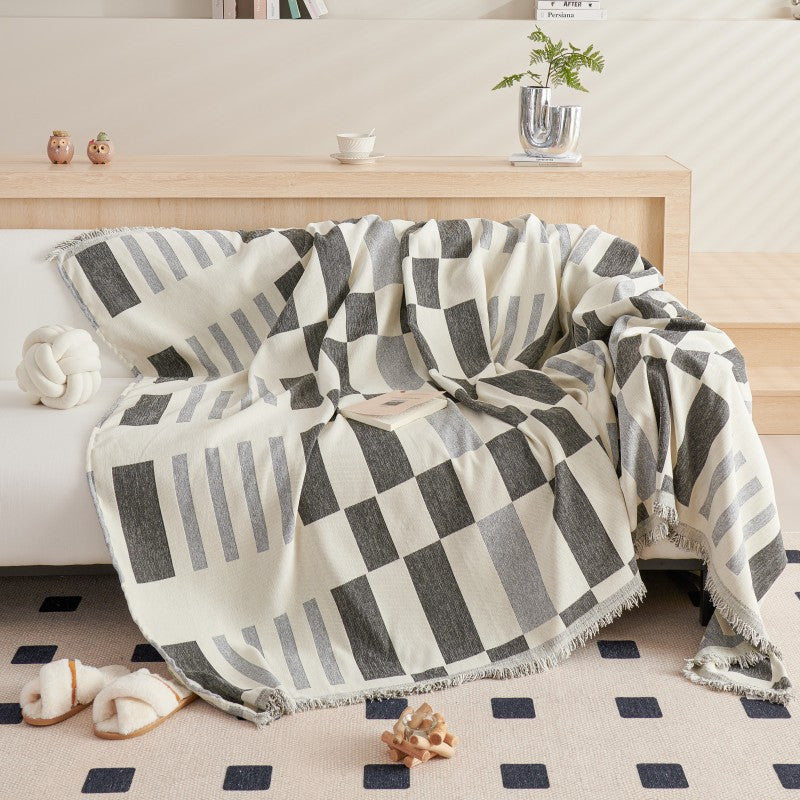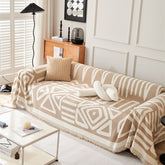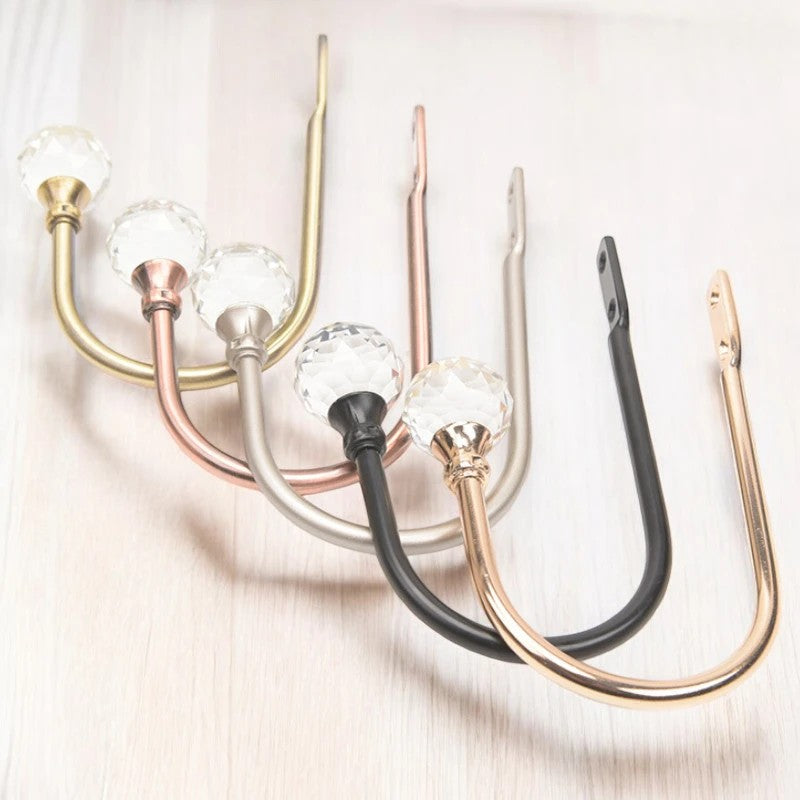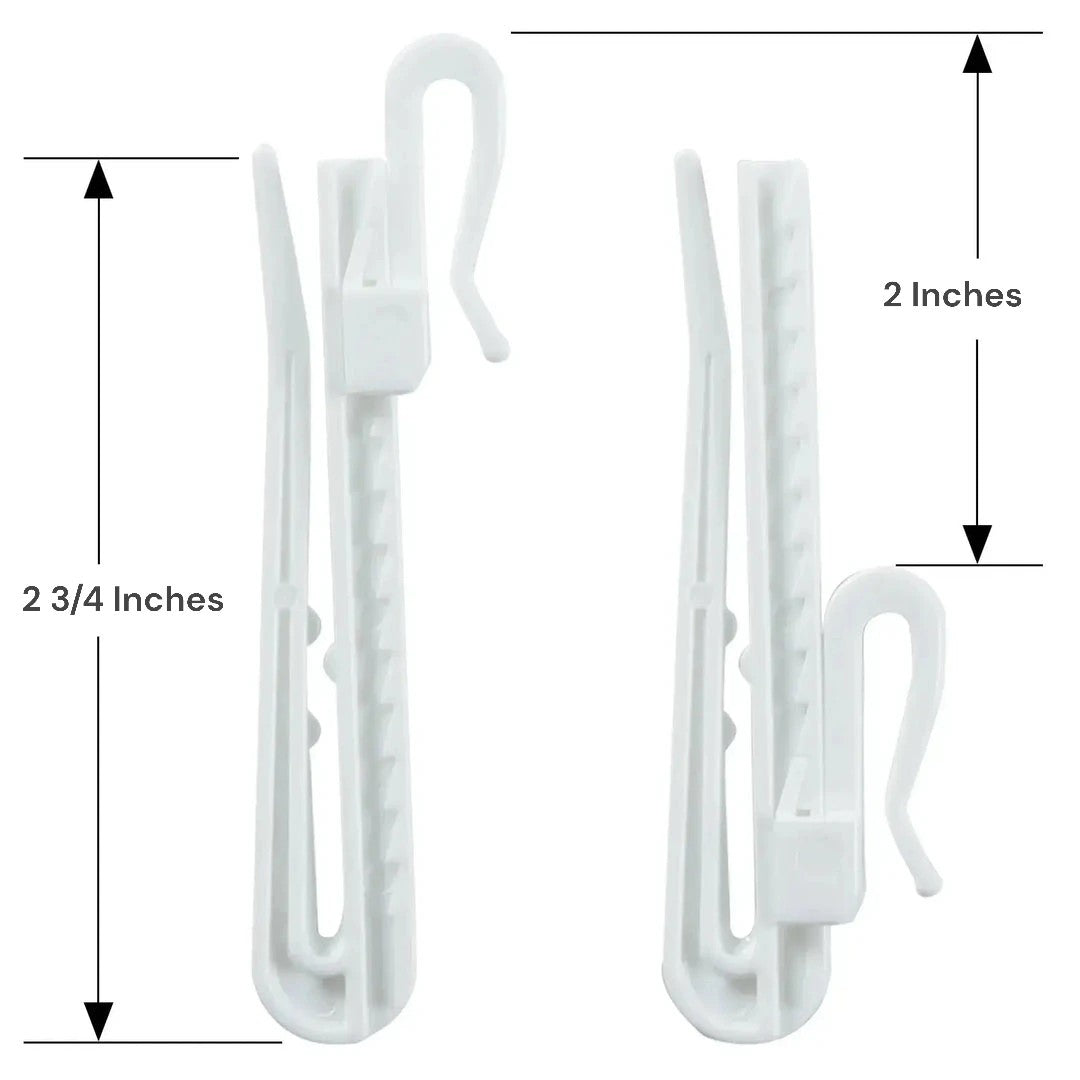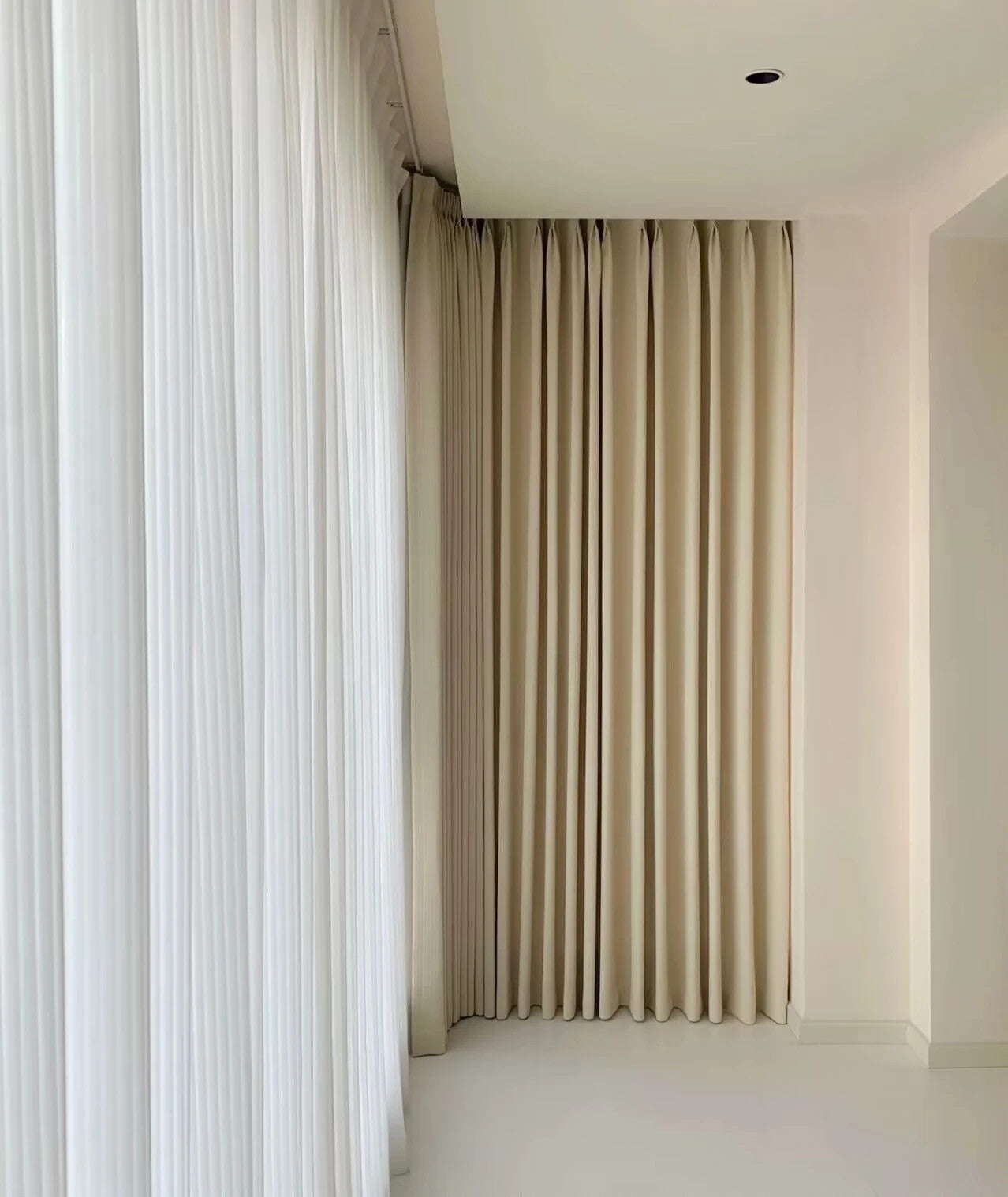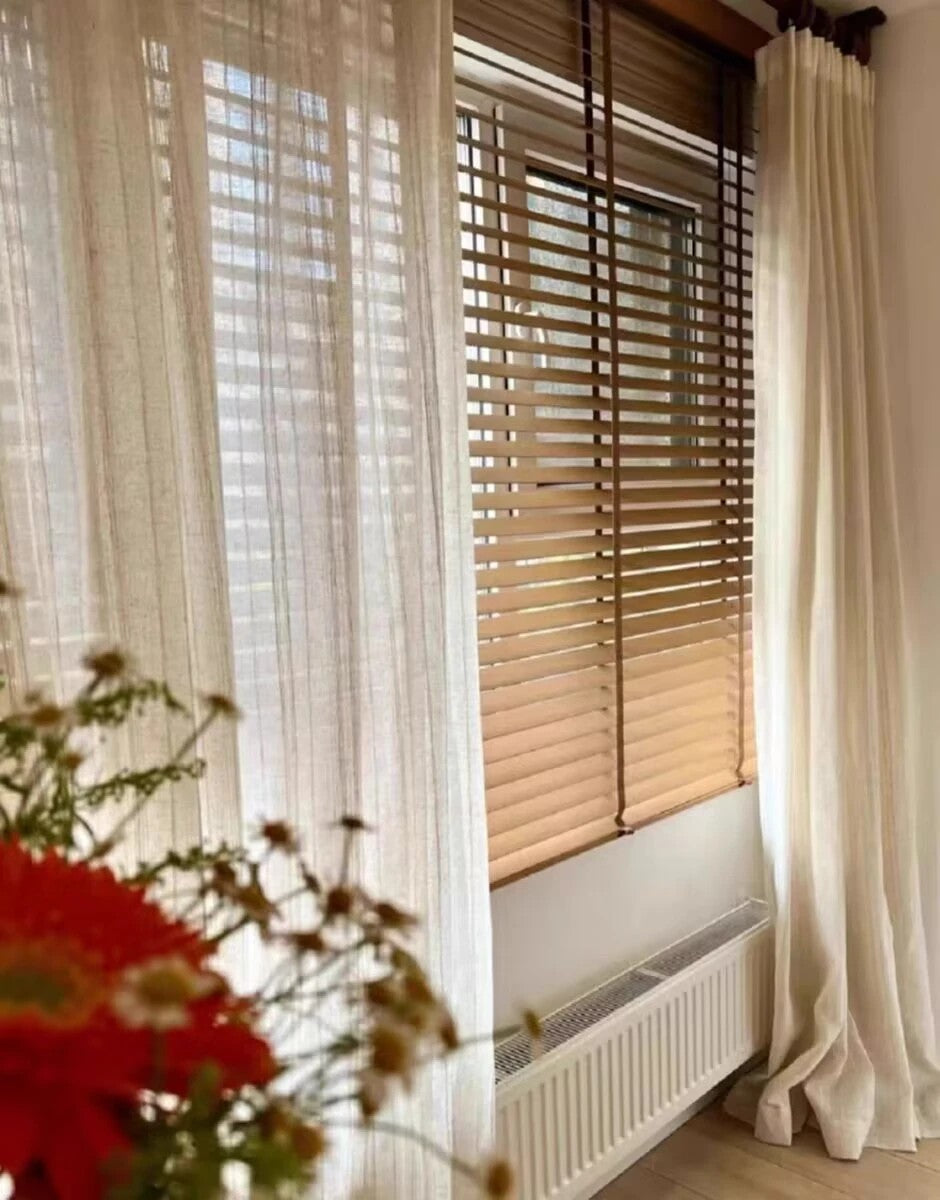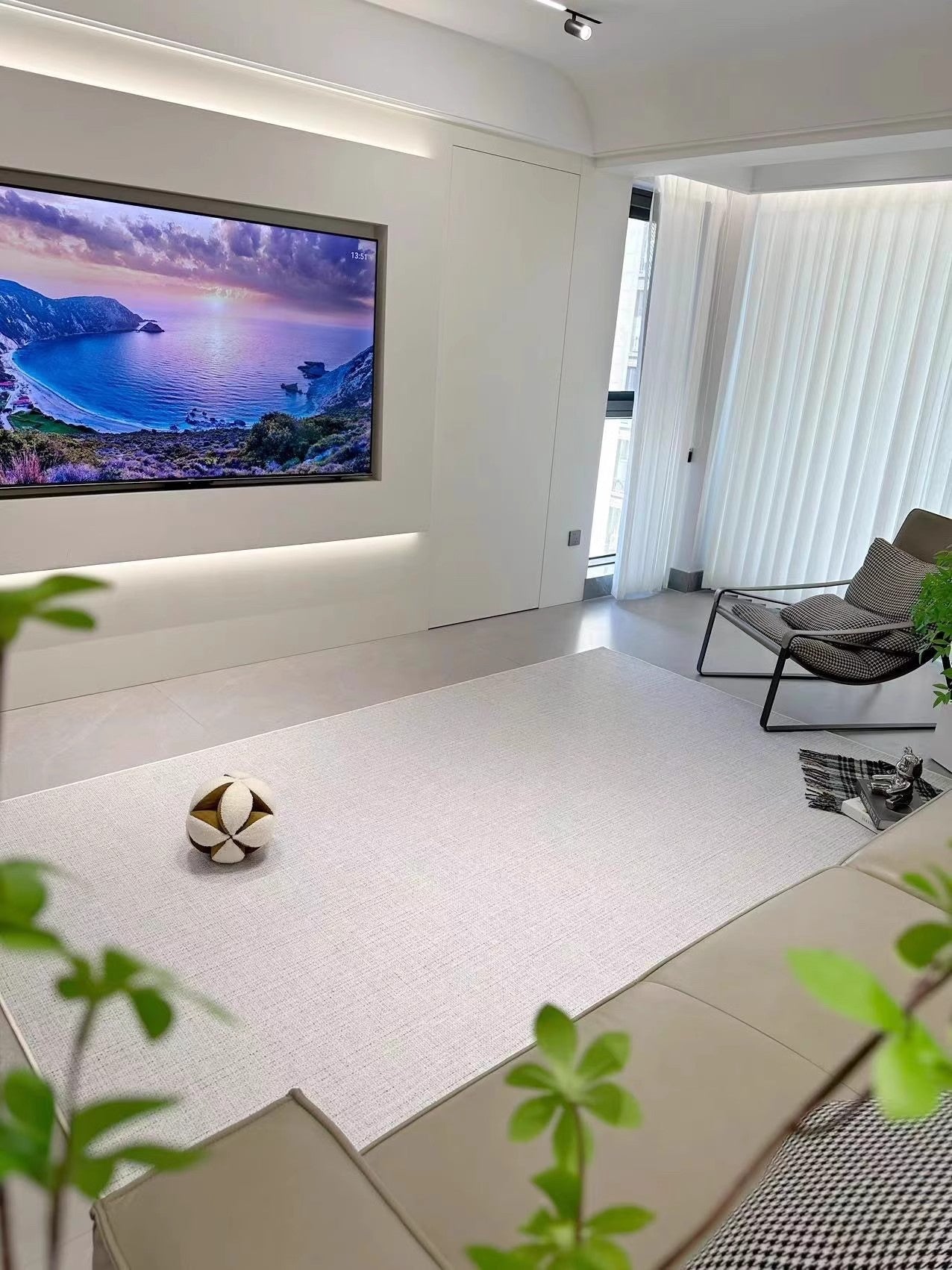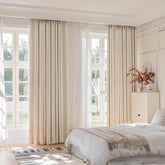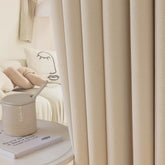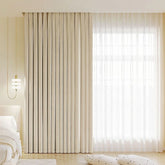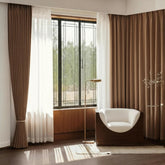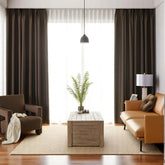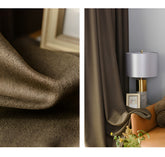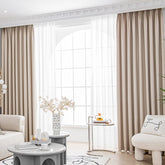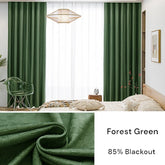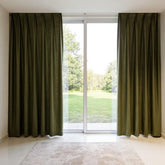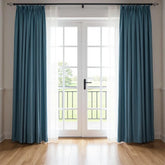Safe Sleep Starts Here: Choosing Curtains for Your Baby's Crib
Hey there, fellow parents! James here, the proud owner of Dolcewe.com. Today, I want to talk about a super important topic: choosing the right curtains for your baby's crib. I want to help you choose safe curtains for your baby's room. They affect sleep quality and safety.
As a dad myself, I know firsthand how important it is to make your little one's nursery both stylish and safe.
In this guide, I'll share what I've learned from helping many parents find the perfect nursery curtains.
You'll discover how to pick curtains that keep your baby safe and help them sleep better.
Key Takeaways
| Main Section | Key Points |
|---|---|
| Why Keep Curtains Away from the Crib? | 1. Strangulation hazards from curtains or blind cords 2. Falling risks from pulling on curtains 3. SIDS risks due to drafts and temperature changes |
| How to Position the Crib Safely | 1. Keep crib a few feet away from windows 2. Place crib near the door for easy access 3. Keep crib away from shelves and heavy wall hangings 4. Ensure no electrical cords or hazards nearby |
| Safety First: Choosing Curtains for Your Baby's Crib | 1. Choose curtains that fall above the crib mattress 2. Opt for cordless curtains or alternatives like tie-up shades 3. Avoid loose hanging curtains or those with choking hazards 4. Select breathable fabrics like cotton or linen |
| Choosing the Best Curtains for a Nursery | 1. Consider blackout curtains for light control or sheer curtains for a softer look 2. Always choose cordless styles for safety 3. Avoid crib canopies due to suffocation and pulling risks |
| Best Practices for Curtain Placement | 1. Position crib away from windows and curtains 2. Use window treatments out of child's reach 3. Ensure curtains don't pose a climbing risk |
| What About Putting the Crib in Front of a Window? | 1. Strangulation and falling risks from curtains or window coverings 2. Temperature issues and SIDS risk from drafts 3. Escape attempts as child becomes more mobile |
| More Tips for a Safe Nursery | 1. Choose a firm, tight-fitting crib mattress 2. Keep pillows, blankets, and stuffed animals out of the crib 3. Always place baby on their back to sleep 4. Use a baby monitor with cords away from the crib 5. Secure furniture to walls to prevent tip-overs |
| Shop Custom Curtains for Your Crib Online at Dolcewe | 1. Wide range of custom curtains designed for cribs 2. Various styles, fabrics, colors, and patterns available 3. Custom sizing for a perfect fit, starting at $26.99 4. Free shipping on orders over $199 and extra 10% off with newsletter sign-up |
Why Nursery Window Treatments Matter for Baby Safety

Babies spend up to 18 hours a day sleeping. Their sleep space needs to be safe. Many parents don't think about how curtains affect baby safety. But window treatments are a key part of nursery safety.
Curtains can pose risks if not chosen with care.
- Long cords and strings can cause choking.
- Some fabrics carry harmful chemicals.
- And poor curtain choice can mess up your baby's sleep pattern.
I've seen many parents rush to fix these issues after their baby arrives.
Window coverings also help control light and room temp. This affects how well and how long your baby sleeps. Getting the right curtains from the start saves worry later on.
The American Academy of Pediatrics backs this up. They say a safe sleep space includes proper window treatments. Let's look at what makes curtains safe for your baby's room.
Key Safety Features to Look for in Baby Room Curtains
Cordless Designs: The #1 Safety Priority
Cords are the biggest danger in nursery curtains. Babies can get tangled in them. The Consumer Product Safety Commission reports over 100 child deaths from window treatment cords. This is why cordless designs are a must.
Cordless blinds and curtains work with a spring system. You can pull them down or push them up with no strings. Some curtains use a wand instead of cords. Others have motors that work with a remote.
When I help parents at Dolcewe.com, I always point them to cordless options first. The small cost difference is worth your peace of mind. Your baby's safety has no price tag.
Non-Toxic Materials: What's in Your Curtain Fabric
What your curtains are made of matters just as much as how they hang. Babies touch and mouth things near them. They also breathe air near their crib for many hours.
Look for OEKO-TEX® certified fabrics. This means they've been tested for harmful chemicals. Organic cotton and linen are good natural choices. They have fewer chemicals and are less likely to cause allergies.
Avoid fabrics with:
- Flame retardants
- Formaldehyde
- PVC
- Phthalates
- Heavy metals
These chemicals can harm your baby's health. At Dolcewe.com, all our nursery curtains use safe, tested fabrics. Your baby deserves the purest air to breathe.
Secure Installation: Keeping Curtains Firmly in Place
Even the safest curtains need proper hanging. Curtain rods must be secure. Heavy curtains need strong brackets. This stops curtains or hardware from falling into the crib.
Mount curtain rods at least 16 inches above and away from the crib. Use wall anchors if you don't hit studs. Check that all parts are tight once a month.
I tell all my customers to test their curtain setup. Give the rod a gentle tug. If it moves or feels loose, fix it right away. Your baby's safety depends on proper installation.
Avoid Crib Canopies
I know crib canopies look adorable, but they're actually not recommended for safety reasons.
Loose fabric can pose a suffocation risk, and your baby might try to pull the canopy down as they get older. Stick with curtains or blinds instead.
Choosing the Right Curtain Types for Your Baby's Room
Blackout Curtains: The Sleep Helper

Good sleep helps babies grow and learn. Blackout curtains block 99% of light. This helps your baby nap during the day and sleep longer at night.
Our customers tell us blackout curtains help set sleep routines. Babies learn that dark means sleep time. Most parents see better sleep within days of hanging blackout curtains.
Blackout curtains also block some noise and save energy. They keep rooms cooler in summer and warmer in winter. This means a more comfy sleep space for your little one.
Sheer Curtains: When Light and Air Flow Matter

Some nurseries need light but still need privacy. Sheer curtains let in soft light while keeping nosy neighbors from peeping in. They work well with blackout curtains for day and night options.
Sheer curtains also help air flow. Good air flow cuts the risk of breathing problems. It also stops mold that can harm your baby's lungs.
For the best setup, pair sheers with blackout curtains. Use sheers during play time and blackouts for sleep time.
At Dolcewe.com, we can make both in colors that match your nursery.
Noise-Reducing Curtains: For Urban Nurseries

If you live on a busy street or in a noisy building, sound is a concern. Noise-reducing curtains use thick fabric to muffle outside sounds. This means fewer wake-ups from car horns or loud neighbors.
These curtains have layers of dense material. They catch sound waves before they reach your baby's ears. Many of our city-dwelling customers say these curtains have been game-changers.
Noise-reducing curtains often block light too. This gives you two benefits in one. Just make sure they have safe, non-toxic materials like our options at Dolcewe.com.
Curtain Placement: How Close to the Crib is Safe?

Safe Distance Rules: Keeping Curtains Away from Curious Hands
Babies grab everything in reach. Keep curtains at least 3 feet from the crib to stop pulling and choking risks. This space also cuts the risk of curtains falling into the crib.
As your baby grows and can stand in the crib, check this distance again. You might need to move the crib farther from windows. Safety needs change as your baby grows.
If your room is small, look at short curtains that end above crib height. Or try window films that don't hang down at all. At Dolcewe.com, we can make custom sizes to fit any window and room setup.
Window Location Strategies: Working with Your Nursery Layout
Not all nurseries have ideal layouts. If your crib must be near a window, take extra steps. Use window guards in case of falls. Make sure curtains are well out of reach.
Consider the sun path when placing the crib. Morning sun might wake your baby too early. Evening sun might heat the room too much at bedtime.
Here's a helpful layout guide:
| Window Position | Best Crib Placement | Recommended Curtain Type |
|---|---|---|
| East-facing | West wall | Blackout for morning sun |
| West-facing | East wall | Blackout for evening sun |
| North-facing | Any wall with 3ft clearance | Sheer or light filtering |
| South-facing | North wall | Blackout for heat control |
Every room is different. Feel free to email me at Dolcewe.com with photos of your nursery. I can suggest the best setup for your space.
Best Fabrics for Baby Nursery Curtains
Natural vs. Synthetic: What's Safest for Baby

Natural fabrics like cotton and linen are best for nurseries. They have fewer chemicals and cause fewer allergies. They also breathe better, helping with room temp control.
Synthetic fabrics often have more chemicals. Some release VOCs (harmful gases) when new. If you do choose synthetics, air them out for a week before hanging in the nursery.
At Dolcewe.com, we offer organic cotton options. These are grown without pesticides. This means even fewer chemicals near your baby. They cost a bit more but give extra peace of mind.
Easy-Clean Options: Practical Choices for Busy Parents
Babies make messes. Machine-washable curtains save time and stress. Look for fabrics that don't need dry cleaning or special care.
Stain-resistant treatments can help. But check that they're non-toxic and safe. Some natural fabrics like hemp resist stains on their own.
Our most popular nursery curtains at Dolcewe.com can go in the washing machine. Most parents wash them every 1-3 months. This keeps dust and germs down in the nursery.
Light Control for Better Baby Sleep

Day vs. Night: Managing Light for Healthy Sleep Cycles
Babies need darkness at night and nap time. But they also need light during play time. The right curtains help manage these lighting needs.
During the day, babies need some natural light. This helps set their body clocks. Bright light tells their brains it's time to be awake. This leads to better sleep at night.
At night and nap time, darkness triggers melatonin. This is the sleep hormone. Darkness helps babies fall asleep faster and stay asleep longer. Blackout curtains help create this sleep-friendly dark space.
Layering Options: Flexible Solutions for All Times of Day
The best setup uses layers of window treatments. This gives you full control over light. You can mix and match based on your needs.
A good layered setup includes:
- Blackout curtains or roller shades for full darkness
- Sheer curtains for filtered light
- Blinds or shades for medium control
With layers, you can adjust light as the day goes on. Open all curtains for morning play. Close sheers for afternoon nap. Close blackouts for nighttime sleep.
At Dolcewe.com, we can help you create a layered system. All our curtains can work together. We make sure the rods and hardware work for your layering needs.
Custom Sizing for Perfect Fit and Safety
Measuring Your Windows: Getting the Perfect Dimensions
Exact measurements lead to safer curtains. Too-long curtains pose trip and pull hazards. Too-short curtains let in light and reduce privacy.
To measure for curtains:
- Measure width: Add 8-12 inches to the window width
- Measure height: Measure from rod to where you want curtains to end
- Consider rod placement: At least 4-6 inches above window
- Allow for hems and headers: Add 2-3 inches to total length
At Dolcewe.com, we make curtains to your exact inches. This means no pooling fabric that collects dust. It also means no gaps that let in light during nap time.
Length Considerations: Safety vs. Style in the Nursery
Floor-length curtains look nice. But they're not always best for nurseries. Sill-length or apron-length curtains are often safer. These stop above the floor, out of grabbing range.
If you want floor-length curtains, keep them 1/2 inch above the floor. This stops dust buildup while still looking full. Never let curtains puddle on the floor in a nursery.
For maximum safety, stop curtains at the windowsill. This works well under wall shelves or furniture. At Dolcewe.com, we custom-make to any length you need for your setup.
Temperature Control: Curtains That Regulate Room Climate
Insulating Properties: Keeping Baby Comfortable Year-Round
Babies can't control their body temp well. Thermal curtains help keep room temp stable. This means fewer wake-ups from being too hot or cold.
In winter, thermal curtains stop cold drafts. In summer, they block heat from sunny windows. Studies show babies sleep best at 68-72°F (20-22°C). The right curtains help maintain this range.
Our thermal curtains at Dolcewe.com have three layers. The outer layer is the color and style you choose. The middle layer blocks temperature. The inner layer makes it look nice from inside.
Seasonal Adjustments: Changing Curtains for Weather Patterns
Your curtain needs change with the seasons. Heavier curtains work better in winter. Lighter ones may be better for summer.
In winter, use thick curtains with thermal backing. Close them at night to keep heat in. Open them during sunny days to let warming sun in.
In summer, close curtains during peak sun hours. This blocks heat gain. Light-colored curtains reflect more heat than dark ones.
Some families keep two sets of curtains. They switch between winter and summer sets. At Dolcewe.com, we can help you pick the right weight for your climate.
Why Keep Curtains Away from the Crib?

I get it – you want your baby's room to look picture-perfect, and putting the crib in front of a window seems like a great idea. But trust me, it's not worth the risk. Here's why:
-
Strangulation hazards: Babies and toddlers can get tangled up in curtains or blind cords, which can be really dangerous.
-
Falling risks: As your little one grows, they might try to pull themselves up using the curtains, which could cause the rod or blinds to fall on them.
-
SIDS risks: Placing the crib near a window can create drafts and temperature changes that might make it harder for your baby to sleep safely.
So, what's a parent to do? Don't worry, I've got you covered!
How to Position the Crib Safely

The key is to keep your baby's crib at least a few feet away from any windows[9]. This way, they can't reach the curtains or blinds, even as they get bigger and more curious. Here are a few more tips:
-
Place the crib near the door, so you can get to your baby quickly in the middle of the night.
-
Keep the crib away from shelves, heavy wall hangings, or anything else that could fall into it.
-
Make sure there are no electrical cords or other hazards nearby.
Best Practices for Curtain Placement
When setting up your baby's nursery, follow these best practices for curtain placement:
-
Position the crib away from windows and curtains to minimize risks.
-
Use window treatments that are out of your child's reach, like valances or high-mounted curtain rods.
-
Make sure curtains don't pose a climbing risk by securing them tightly and keeping furniture away from windows.
Alternatives to Traditional Curtains
If you're looking for safe window treatment options besides traditional curtains, consider:
-
Valances: These short, decorative window treatments add style without the risks of long curtains.
-
Shades and Blinds: Look for cordless options or those with safety features like breakaway cords.
-
Safety-Certified Window Treatments: Choose products that meet child safety standards and are recommended by experts
What About Putting the Crib in Front of a Window?

I get this question a lot, and the short answer is: it's not a good idea. Here's why:
-
Strangulation and falling risks: As we talked about before, babies can get tangled in curtains or pull down window coverings, which can be really dangerous.
-
Temperature issues: Drafts from windows can make it harder for your baby to regulate their body temperature, which can increase the risk of SIDS.
-
Escape attempts: As your little one gets older and more mobile, they might try to climb out of the crib using the window.
If you absolutely must put the crib near a window, make sure to use cordless blinds or curtains, and install window guards for added safety. But if possible, it's best to find another spot for the crib.
More Tips for a Safe Nursery
Creating a safe sleep space for your baby involves more than just curtains. Here are a few more things to keep in mind:
-
Choose a firm, tight-fitting crib mattress with no gaps around the edges
-
Keep pillows, blankets, and stuffed animals out of the crib, especially for babies under 12 months
-
Always place your baby on their back to sleep[6].
-
Use a baby monitor, but keep the cords well away from the crib
-
Secure furniture like dressers and bookshelves to the walls to prevent tip-overs.
When Can You Use Curtains or Canopies Safely?

As your child gets older and moves into a "big kid" bed, you might be wondering if it's okay to add some curtains or a canopy for a fun, cozy feel.
Here are a few things to consider:
-
Wait until your child is at least 2 years old and no longer sleeping in a crib.
-
Choose lightweight, breathable fabrics that don't pose a suffocation risk.
-
Make sure any curtains or canopies are securely fastened well out of your child's reach.
-
Avoid any cords, ties, or loose fabric that could become a strangulation hazard.
If you're not sure whether a particular curtain or canopy is safe for your child's room, err on the side of caution and skip it. There are plenty of other fun ways to decorate!
Putting It All Together
Phew, that was a lot of information! But don't worry – creating a safe and stylish nursery is totally doable. Just remember:
-
Keep the crib away from windows, cords, and other hazards.
-
Choose cordless, securely fastened curtains or blinds.
-
Avoid crib canopies and other loose fabric near the sleep area.
-
Follow safe sleep guidelines, like using a firm mattress and keeping the crib clear of blankets and pillows.
-
Have fun with your nursery decor, but always put safety first!
Our Custom Baby-Safe Curtain Solutions at Dolcewe.com
Made-to-Measure Process: How We Create Your Perfect Curtains
At Dolcewe.com, we make each curtain set just for you. Here's our process:
- You measure your windows (we have guides to help)
- You choose fabric, style, and features on our website
- Our team reviews your order for any potential issues
- We cut and sew your curtains to exact measurements
- We perform quality checks on your finished curtains
- We ship them to you with hanging instructions
This custom approach means perfect fit every time. No more too-short or too-long curtains. No more gaps letting in light during nap time.
Looking for the perfect curtains to complete your baby's nursery? Look no further than Dolcewe.com!
We offer a wide range of custom curtains designed specifically for cribs, so you can create a safe and stylish space for your little one.Choose from a variety of styles, fabrics, colors, and patterns to match your nursery decor.
Whether you prefer classic blackout curtains or lightweight sheer panels, we've got you covered. Our curtains are available with different header options, so you can easily hang them to fit your window.The best part?
Our custom sizing ensures a perfect fit for your crib area, with prices starting at just $26.99. Plus, enjoy free shipping on orders over $199 and an extra 10% off when you sign up for our newsletter.
Create your dream nursery today with Dolcewe.com!



